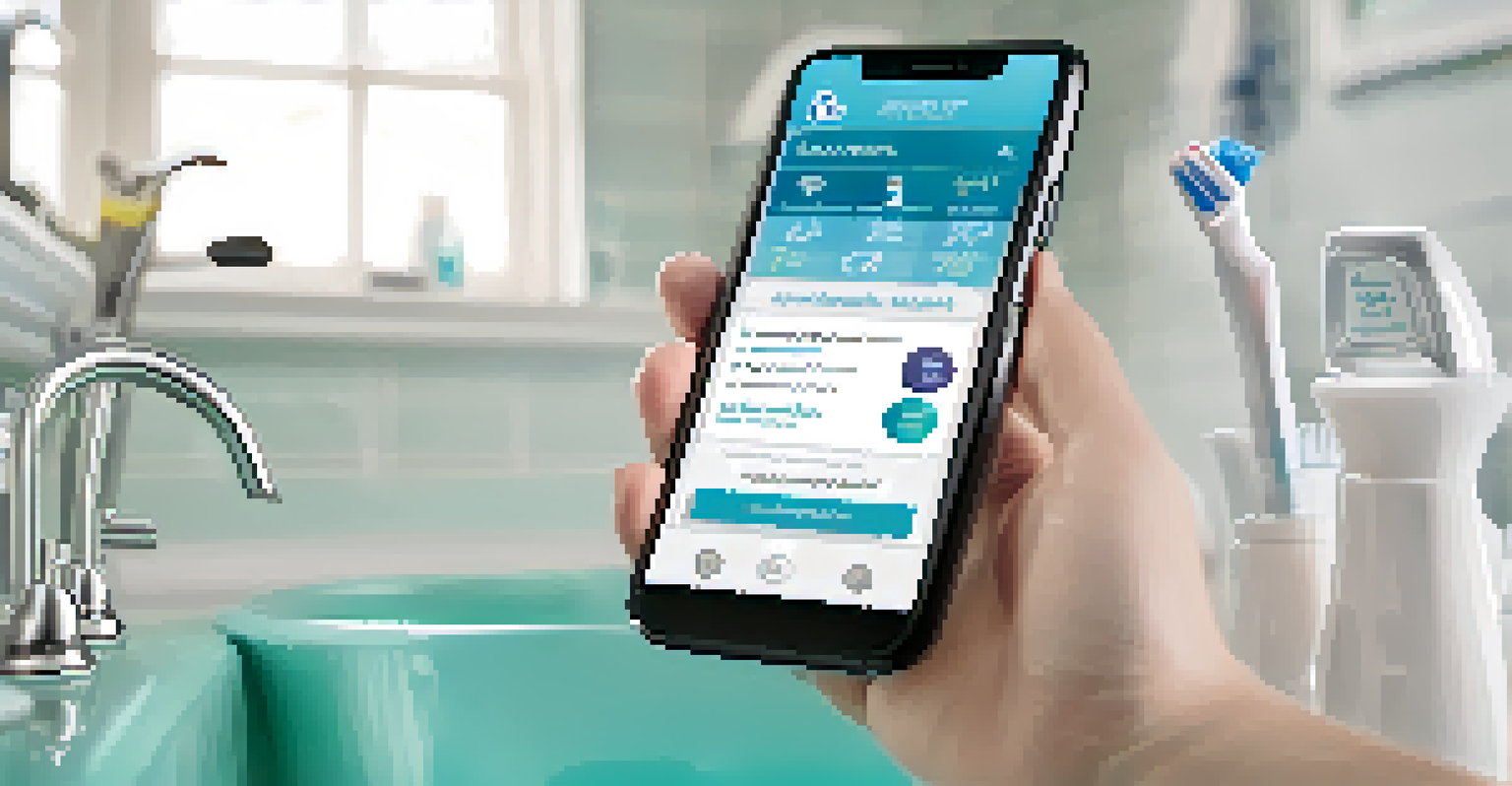The Importance of Oral Health Literacy in Communities

What is Oral Health Literacy and Why Does it Matter?
Oral health literacy refers to the ability to obtain, process, and understand basic oral health information. This skill is crucial for making informed decisions about dental care and hygiene. Just like reading a nutrition label helps you make healthier food choices, understanding oral health information empowers individuals to take charge of their dental health.
The health of your mouth can affect your overall health.
When people lack oral health literacy, they may struggle to understand the importance of regular check-ups or the proper techniques for brushing and flossing. This gap in knowledge can lead to poor oral health outcomes, increased dental problems, and higher healthcare costs in the long run. Essentially, oral health literacy acts as a bridge to better health and well-being.
Communities with higher levels of oral health literacy often experience lower rates of dental disease and better overall health. By prioritizing education around oral health, we can foster environments where everyone has the tools they need to maintain healthy smiles.
The Role of Education in Enhancing Oral Health Literacy
Education is a powerful tool in building oral health literacy. Schools, community centers, and healthcare providers can all play a role in disseminating information about oral hygiene practices. For instance, teaching children the importance of brushing their teeth twice a day can instill lifelong habits that lead to better oral health.

Moreover, community workshops and outreach programs can target specific groups, such as parents or older adults, to address their unique oral health concerns. Providing accessible information in various formats, such as pamphlets, videos, or interactive sessions, helps cater to different learning styles and needs.
Importance of Oral Health Literacy
Oral health literacy empowers individuals to make informed decisions about their dental care, leading to better health outcomes.
By equipping individuals with the knowledge they need, communities can empower their members to make better health choices. This proactive approach not only improves individual oral health but also contributes to a healthier, more informed community overall.
Challenges in Achieving High Oral Health Literacy
Despite the importance of oral health literacy, several challenges hinder its widespread achievement. Language barriers, socioeconomic status, and access to healthcare can all impact an individual's ability to understand oral health information. For example, a person who speaks a different language may struggle to comprehend health materials that are only available in English.
An ounce of prevention is worth a pound of cure.
Additionally, those in low-income communities may lack access to dental care and educational resources, leading to a cycle of poor oral health. Without the right tools and support, individuals may feel overwhelmed and unsure about how to maintain their dental hygiene.
Recognizing these challenges is the first step toward creating solutions. By addressing barriers and providing tailored resources, communities can work together to ensure that everyone has the opportunity to improve their oral health literacy.
The Impact of Oral Health Literacy on Health Outcomes
Research shows a strong connection between oral health literacy and overall health outcomes. Individuals with higher literacy levels are more likely to engage in preventive dental care, leading to fewer cavities, gum disease, and other oral health issues. This proactive behavior can significantly reduce the need for expensive dental treatments down the line.
Moreover, poor oral health has been linked to a range of systemic health issues, including diabetes and heart disease. By promoting oral health literacy, we not only enhance dental health but also contribute to the overall well-being of individuals and communities.
Education Enhances Oral Health Knowledge
Community education initiatives play a vital role in improving oral health literacy by providing accessible information and resources.
In essence, improving oral health literacy is an investment in public health. By prioritizing education and awareness, communities can foster environments that promote better health outcomes for all.
Community Initiatives to Promote Oral Health Literacy
Many communities are taking proactive steps to boost oral health literacy through various initiatives. Health fairs, school programs, and local campaigns often feature interactive exhibits, free dental screenings, and informative sessions on oral hygiene. These initiatives help make oral health education engaging and accessible to all age groups.
In addition, partnerships with local dental professionals can provide expert insights and support. For instance, dentists may volunteer their time to conduct workshops or offer free consultations, strengthening the community's connection to oral health resources.
By fostering a collaborative approach, these community initiatives not only raise awareness but also build a sense of shared responsibility for oral health. When everyone works together, the impact on overall community health can be profound.
Innovative Technologies and Oral Health Literacy
In today's digital age, technology plays a significant role in enhancing oral health literacy. Mobile apps, online resources, and social media platforms can provide easy access to valuable information about oral hygiene practices. For example, an app that sends reminders for dental check-ups can help users stay on top of their oral health needs.
Moreover, educational videos and interactive quizzes available online can make learning about oral health engaging and fun. These tools cater to different preferences, allowing individuals to learn at their own pace and in their own style.
Technology's Role in Oral Health Learning
Innovative technologies, like mobile apps and online resources, are crucial for enhancing access to oral health information and engaging communities.
By leveraging technology, communities can reach a wider audience and foster a culture of oral health awareness. This modern approach complements traditional educational methods, creating a comprehensive strategy for improving oral health literacy.
The Future of Oral Health Literacy in Communities
Looking ahead, the future of oral health literacy in communities appears promising. With increasing awareness of the importance of dental health, more organizations are prioritizing education and outreach programs. This trend signifies a collective commitment to improving oral health literacy across diverse populations.
Additionally, as technology continues to evolve, we can expect even more innovative solutions to emerge. From telehealth consultations to gamified learning tools, the possibilities for engaging communities in oral health education are limitless.

Ultimately, the goal is to create a culture where oral health literacy is prioritized and individuals feel empowered to take charge of their dental health. By investing in education and resources, we can pave the way for healthier communities, one smile at a time.